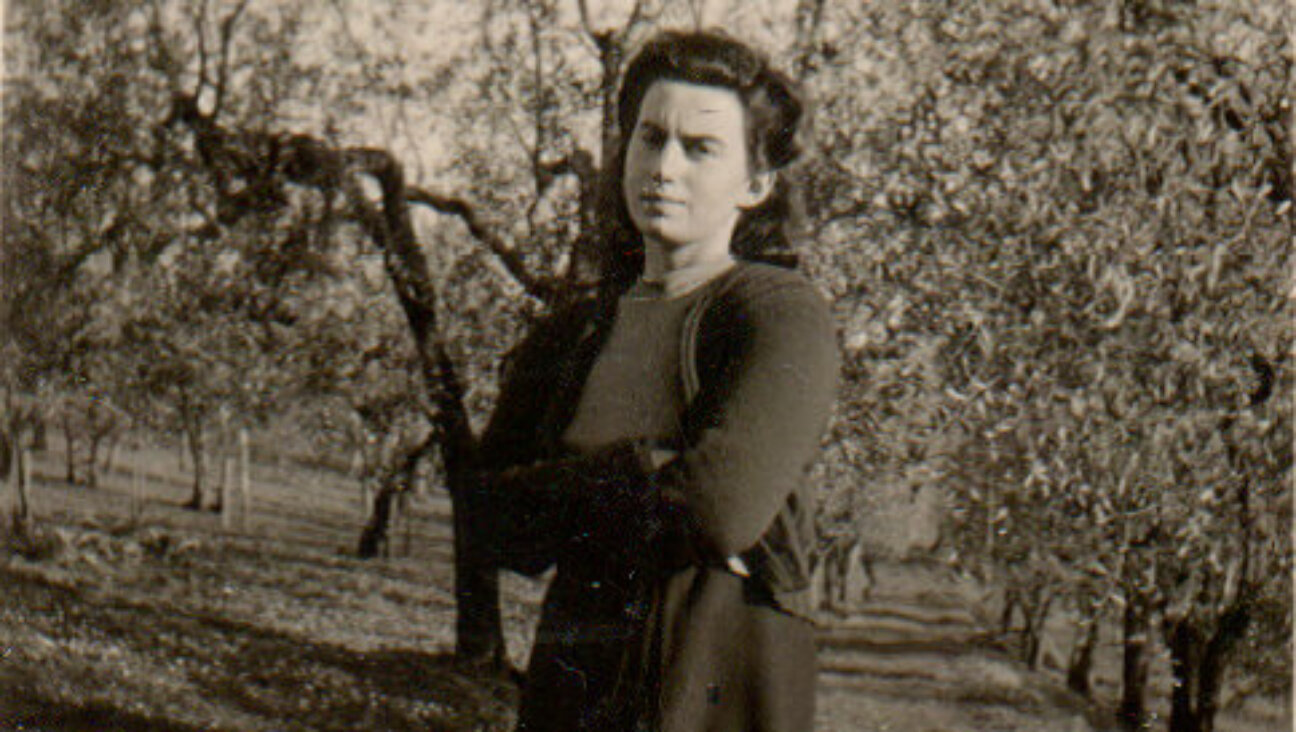Jazz Musician Herbie Mann Went Back to His Roots
The CD cover of “The Best Of Herbie Mann” features a shot of the late jazz flutist, taken some time in the mid-1960s. The very picture of an urban Jewish hepcat, Mann stares out of the photo looking cool and disinterested. Some people might argue the cool part, but no one could ever accuse him of being disinterested.
Mann, who died last week at the age of 73, was a man of voracious musical curiosity, and he couldn’t stop himself from trying new sounds. Brought up on swing, he played bebop, Afro-Cuban jazz, rhythm and blues, reggae and disco, and collaborated with everyone from Bill Evans and Sarah Vaughan to Duane Allman and Stereolab. He helped bring bossa nova to the masses, pioneered jazz-rock fusion and did more than anyone to make the flute a credible lead instrument in jazz. At times, his idiosyncratic career path alienated him from the critical establishment, and when he had hits — in 1970, for instance, he scored five of the top 20 jazz albums — that establishment was quick to dismiss him as being too accessible and commercial.
Born Herbert Jay Solomon in 1930 in Brooklyn, Mann was initially inspired by a Benny Goodman concert he saw when he was 9 years old. Mann always said his parents took him to the concert in order to stop him from banging on the family’s pots and pans, his favorite mode of musical expression at the time.
Goodman apparently had the desired effect, because young Herbert soon took up the clarinet and tenor sax, with flute thrown in for good measure. After serving in an army band from 1948 to 1952, he returned to New York to find the city chock-a-block with tenor saxophonists. Fortunately, Dutch accordionist Mat Mathews came looking for a flute player to help on some sessions with Carmen McRae, and Mann stepped in. By incorporating Latin rhythms and mixing them with the bop innovations of Dizzy Gillespie and Miles Davis, Mann created his own sound, and a blueprint for jazz flute that later players would follow.
Rhythm was always the motivating fascination for Mann. After leaving Matthews’s quintet in the mid-1950s, he played bop and straight jazz, but he found himself drawn to Afro-Cuban music. When he formed the Afro-Jazz Sextet in 1959, he performed with as many as three percussionists and four trumpeters behind him, in addition to the basic combo of vibes, bass and drums. The sound was more African than jazz, and it launched Mann on a stylistic exploration of what would now be called world music. He was one of the first North American musicians to play bossa nova, inspired by the 1959 film “Black Orpheus” and its soundtrack by Luiz Bonfa and Antonio Carlos Jobim. The laid-back pulse of the Brazilian style, its combination of intricate multi-rhythms and melodic playfulness, provided the perfect frame for his soaring flute solos.
But even though it remained a touchstone of his style, bossa nova soon gave way to other sounds. His 1962 hit “Comin’ Home Baby” was built around a blues dance beat, while the seminal 1969 album “Memphis Underground” featured avant-garde guitarist Sonny Sharrock and soul-jazz percussionist Roy Ayers. By the early 1970s, he had incorporated Middle Eastern, Turkish and Japanese music into his work, and formed the group Family Of Mann, which gave him the disco hit “Hi-Jack” with Cissy Houston in 1974.
Mann continued to discover new music well into the 1990s. But it wasn’t until he was diagnosed with prostate cancer in 1997 that he turned to his own ethnic background for inspiration. In 2000, he released “Eastern European Roots,” a collection of folk tunes and originals that incorporated klezmer and other strains of Jewish music tradition. In an interview with the Rocky Mountain News that was widely quoted following his July 2 death, Mann said: “I’ve played Cuban music, but I’m not Cuban. I’ve played Brazilian music, but I’m not Brazilian. I’ve played jazz, but I’m not African-American. What I am is an Eastern European Jew. I love all the music I’ve played, but I wanted something that is mine.”
The Forward is free to read, but it isn’t free to produce

I hope you appreciated this article. Before you go, I’d like to ask you to please support the Forward.
Now more than ever, American Jews need independent news they can trust, with reporting driven by truth, not ideology. We serve you, not any ideological agenda.
At a time when other newsrooms are closing or cutting back, the Forward has removed its paywall and invested additional resources to report on the ground from Israel and around the U.S. on the impact of the war, rising antisemitism and polarized discourse.
This is a great time to support independent Jewish journalism you rely on. Make a gift today!
— Rachel Fishman Feddersen, Publisher and CEO
Support our mission to tell the Jewish story fully and fairly.
Most Popular
- 1

Fast Forward Ye debuts ‘Heil Hitler’ music video that includes a sample of a Hitler speech
- 2

Opinion It looks like Israel totally underestimated Trump
- 3

Culture Cardinals are Catholic, not Jewish — so why do they all wear yarmulkes?
- 4

Fast Forward Student suspended for ‘F— the Jews’ video defends himself on antisemitic podcast
In Case You Missed It
-

Culture How one Jewish woman fought the Nazis — and helped found a new Italian republic
-

Opinion It looks like Israel totally underestimated Trump
-

Fast Forward Betar ‘almost exclusively triggered’ former student’s detention, judge says
-

Fast Forward ‘Honey, he’s had enough of you’: Trump’s Middle East moves increasingly appear to sideline Israel
-
Shop the Forward Store
100% of profits support our journalism
Republish This Story
Please read before republishing
We’re happy to make this story available to republish for free, unless it originated with JTA, Haaretz or another publication (as indicated on the article) and as long as you follow our guidelines.
You must comply with the following:
- Credit the Forward
- Retain our pixel
- Preserve our canonical link in Google search
- Add a noindex tag in Google search
See our full guidelines for more information, and this guide for detail about canonical URLs.
To republish, copy the HTML by clicking on the yellow button to the right; it includes our tracking pixel, all paragraph styles and hyperlinks, the author byline and credit to the Forward. It does not include images; to avoid copyright violations, you must add them manually, following our guidelines. Please email us at [email protected], subject line “republish,” with any questions or to let us know what stories you’re picking up.















